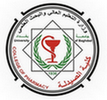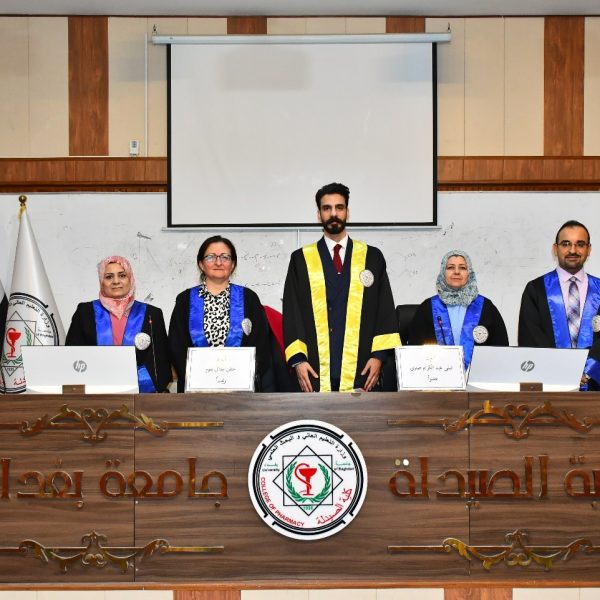The College of Pharmacy discussed the MSc thesis entitled “Preparation and Evaluation of Propranolol-HCl as a Topical Nanoemulgel for Infantile Hemangioma Therapy” by the student Taif Mohanad Abdullah and the supervisor, Assistant Professor Dr. Khalid Kadhem Al-Kinani, at the Pharmaceutics Department. The study aimed to develop a nanoemulgel (NEG) for the topical delivery of propranolol-HCl (PHCl). Currently, PHCl stands as the sole approved medication for the treatment of infantile hemangioma (IH). The study included a nanoemulsion (NE) of PHCl that was meticulously formulated using clove oil, Tween 20, polyethylene glycol 400, or propylene glycol. The characterization of the NE was carried out, including measurements of thermodynamic stability, electrical conductivity, dilutability, globule size, polydispersity index, percent light transmittance, drug content, in-vitro drug release, and morphological analysis via atomic force microscopy (AFM). The results showed that the formula (NE5), in particular, emerged as a standout candidate, displaying exceptional stability and resilience in both thermodynamic and dilution tests. It showed an acceptable globule size, a low PDI, good light transmittance, and a drug content of 99.79% with complete drug release at 2 h. Images of AFM revealed non-aggregate spherical globules in the nano-size range, further indicating its stability. There was a high homogeneity in drug content uniformity at 99.54%. The system had likewise revealed good stability and maintained its physical properties at a variety of temperatures. In ex-vivo skin retention and cumulative permeation studies, the PHCl-NEG demonstrated effective deposition within the dermal layer, with minimal permeation of PHCl through the skin. The study demonstrated the potential of PHCl-NEG for topical application as a promising alternative to oral PHCl administration. The study recommended the necessity for further clinical trials in order to rigorously delve more into the efficacy and safety of nanoemulgel as an innovative therapeutic strategy for IH treatment.





